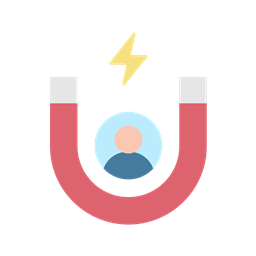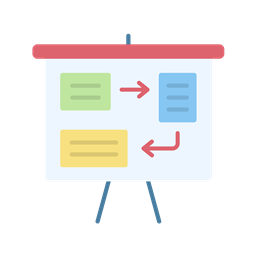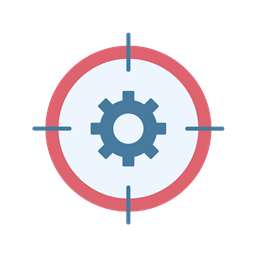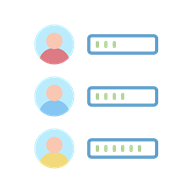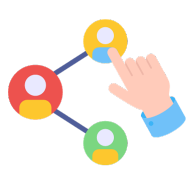Over the past couple of years, we’ve all gotten accustomed to work being confined to mobile devices. We have learned that everything from meetings to evaluations to process reports can be completed and shared with the team virtually. But what if we left some of these practices online to increase their efficiency? Hiring is one such job aspect. Switching to a remote hiring process can benefit not only your company but also your sanity, allowing AI to complete the analytical selection processes on your behalf and allowing you to increase time management by only stepping in virtually until you have selected the best candidates to meet with.
When we think remote hiring, there is still a tendency to think ‘sloppy.’ But this needn’t be the case. With an increasing number of AI technologies allowing us to weed through a pool of applicants based on data that we have input, the initial stages of recruiting can become more analytical and less subjective, allowing HR professionals to have a bigger and more qualified pool of candidates to refine and select from.
Remote recruiting benefits start not with the actual recruiting, but with the very first step of putting the vacancy out there. Perhaps the most crucial trick in remotely attracting the right candidate, since remote talent will not be able to visit your company personally, is to have written the correct job description. This in itself can be a very useful tool in helping you comprehend the job requirements better for when you eventually select the best candidate.
After the pool of applicants has been attracted to the job description, then it’s time for AI to work its magic. With many services that can help you automatically screen candidates (and teams like us to help you implement these systems!), the first stages of recruiting transform from being the most difficult and time consuming to the quickest and easiest. Moreover, without the need to focus only on local candidates, you will now have a wider pool to select from. This stage of remote recruiting is very beneficial not just in that it will save you, the HR professional, time, but also in that it will yield a bigger pool of qualified candidates that will eventually be refined to the best suited for the job.
And finally, when you’ve reached the interview stage, this can also be divided into two parts to help you remain more focused while saving time. With the implementation of one-sided video interviews where candidates are recorded responding to pre-set questions, not just you but an entire team or existing company workers can decide on which candidates to then conduct final interviews with. When the time comes for that final one-on-one video interview with the best of the best, then you can more effectively evaluate the candidates by conducting all of the interviews from the comfort of your desk, knowing that you are meeting only with those best suited for the position.
Now, before we risk sounding too preachy, enough with the benefits of virtual recruitment. This is all good and well, but how do you even begin to start remote recruiting? Lucky for you, we’ve prepared some pointers.
Write a good job description
Remember this one, from the benefits listed above? Well, though writing a good job description will eventually be beneficial for you as well, it’s also the most crucial first step in implementing your remote recruiting strategy. Make sure the correct people are applying to the correct position by keeping your description elaborate, yet short and sweet.
Decide on which programmes you will be using
Remote recruiting is only as good as the pipelines it flows through. So, make sure you take ample time deciding on which software you will be using and learning how to use them. At this stage, teaming up with a business to help you implement these strategies can be the most time and cost efficient way to proceed, as it will quicken the process and eliminate potential mistakes later on.
Make sure you are including video interviews
Video interviews come in twos – prerecorded and one-on-one. Implementing prerecorded, one-way video interviews to your hiring process can be very helpful in refining your talent pool even further, as it will act as a more advanced stage in the hiring process that you do not have to be virtually present for. These interviews will also help you see how well these candidates handle professional stressors virtually, which is especially important for future remote employees. For one-on-one video interviews, just make sure you are using the platform that you find most reliable, and that you are able to record on if you would like to revisit the conversation later on.
Prepare for video interviews
It’s not just the interviewee that has to prepare for an interview, but also the interviewer. Though this is not a face-to-face evaluation, you must still come prepared. The usual interview skills go here as well – know the candidate’s resume, know the job vacancy and the company ethos inside out, and have some questions ready. This time with an additional step: know how to handle any technical issue should they arise, and perhaps have an IT team member’s number on the ready.
Get familiar with remote onboarding
Remote recruiting doesn’t end with the hiring process, but extends onto onboarding once you have decided on the best candidate or candidates. Though you might be very happy to have found ‘the one,’ perhaps one of the most important steps in helping your new employee(s) feel welcome and confident will be how you onboard them onto the company. Software can come in handy here too. Dividing this step onto pre-onboarding and onboarding, you will be able to welcome your new employee(s) to the company with some pre-introduction essentials like paperwork, rules and regulations, etc. before moving onto a virtual face-to-face panel where you speak with everyone and personally answer any questions they might have. Remote workers will then have to meet the rest of the team, so make sure to arrange a virtual meeting platform through which this can be done. And finally, make sure you have a project that your new hire(s) can work on straight away – there’s nothing worse than starting a first day on the job with nothing to do!
And there it is; all the reasons why remote recruiting can be beneficial to your company and the ways you can incorporate it into your hiring process. Do you have any other helpful pointers? Let us know!

